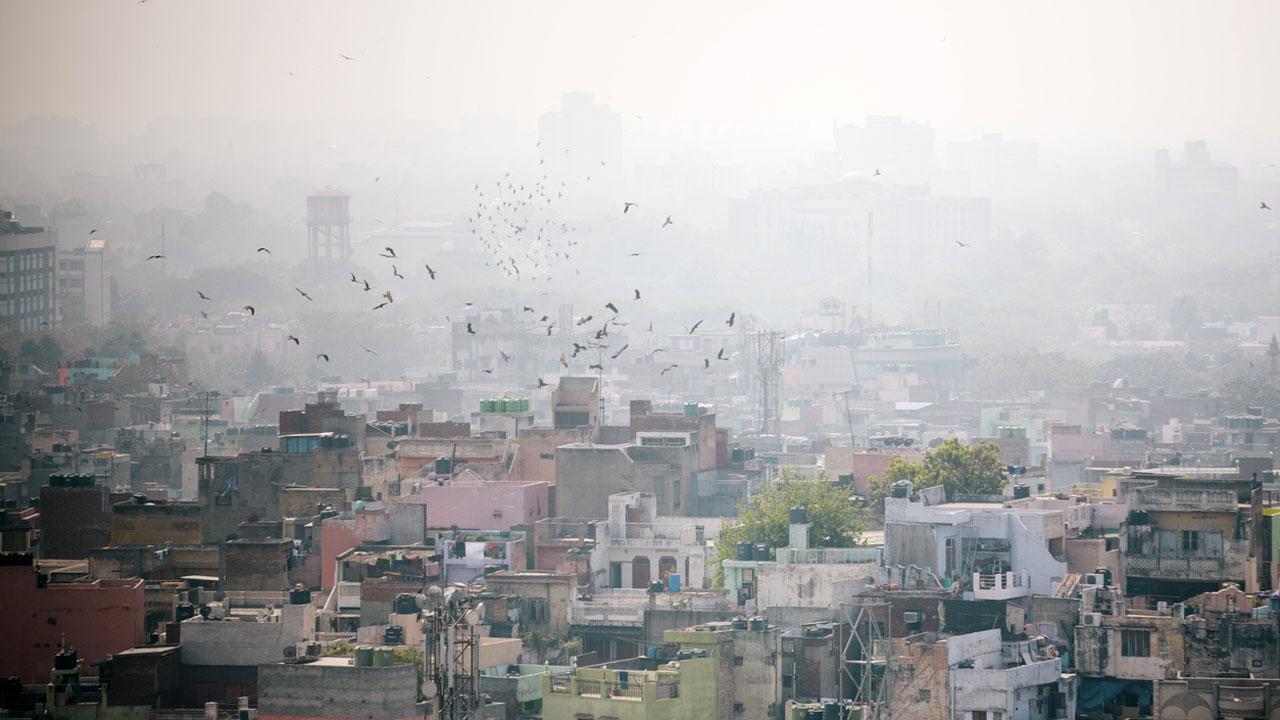The comparison of the earlier emission inventory (2012-13) with the current inventory (2019-20) suggests that the transport sector -- at 91 per cent -- contributes the most towards PM2.5, while it is the residential sector -- at 107.7 per cent -- that contributes most to the PM10 levels

This picture has been used for representational purpose
The Pune Metropolitan Region (PMR) has witnessed a steep increase of 70 per cent and 61 per cent in PM2.5 and PM10 levels, respectively, between 2012-13 and 2019-20, according to the latest emission inventory. The comparison of the earlier emission inventory (2012-13) with the current inventory (2019-20) suggests that the transport sector -- at 91 per cent -- contributes the most towards PM2.5, while it is the residential sector -- at 107.7 per cent -- that contributes most to the PM10 levels.
ADVERTISEMENT
The transport sector contributed 87.9 per cent to PM10 and 91 per cent to PM2.5; the industrial sector contributed 33.8 per cent to PM10 and 32.9 per cent to PM2.5; the residential sector contributed 107.7 per cent to PM10 and 57.9 per cent to PM2.5, while the wind-blown re-suspended dust contributed 49.5 per cent to PM10 and 38.1 per cent to PM2.5, the latest emission inventory revealed. The residential sector includes cooking, slums, trash, cow dung, street vendor, wood burning etc. while the other sectors such as municipal solid waste (MSW) treatment plants, MSW open burning, crematoriums, aviation, incense sticks, brick kilns etc. were among the many sources which have been newly added, so they were not appropriate for comparison, the inventory said.
The emission inventory has been prepared by the Indian Institute of Tropical Meteorology (IITM), Pune, under the Ministry of Earth Sciences along with the Savitribai Phule Pune University (SPPU) and Utkal University. Geographical Information System (GIS)-based statistical emission model developed by scientists of IITM under the SAFAR model has been used for this. The emission inventory work was carried out for the whole of PMR region that comprises areas under the Pune Municipal Corporation (PMC) and Pimpri Chinchwad Municipal Corporation (PCMC) for all the eight major pollutants, including PM2.5, PM10, NOx, CO and SO2.
The data was revealed at a special seminar organised by the Centre for Environment Education (CEE), Pune, which was attended virtually by people from all over India. "There has been an enormous growth in the number of vehicles in PMR during the past decade. Therefore, the transportation sector is found to be the major contributor to PM2.5 emissions as compared to the other sources," senior IITM scientist and Project Director, SAFAR, Gufran Beig, who led the prject, said.
"Though industrial production has increased over the years, emissions show a minimal rise as compared to the other sectors. At present, the magnitude of air pollution is quite low as compared to highly-polluted Delhi, but the overall emission growth during the past 7-8 years of most toxic PM2.5 in Pune is much higher (at 70 per cent) as compared to Delhi (at 15 per cent)," he said.
Because, in general, absolute magnitude of emissions in Pune is still quite less than Delhi and also Pune has the advantage due to its geography being a city with hillocks enabling quick outflow and dispersion, whereas Delhi has a huge disadvantage due to its landlocked geography, which traps pollutants, he explained. However, Beig warned, "But beyond a tipping point (once a saturation level in absolute magnitude is reached), PMR is likely to have rapid deterioration in air quality if the present growth rate is not arrested."
The Emission Inventory was made on accounting and quantifying the sources of air pollution at every 400-metre grid. Prior to this, a six-month long emission inventory campaign was carried out involving about 190 students from IITM, SPPU and Utkal University. It was carried out during 2019-20 in PMR with around 2,50,000 man hours of work.
This exercise was carried out to collect real time primary activity data of 26 different local sources of air pollution considering various small sectors/factors such as condition of road, pattern of transport flow from surrounding regions, fast moving-slow moving-stagnant traffic scenario, uninformed sector, construction activity, aviation, practices by immigrant works, hospital rush and vehicles from outside the state, changing lifestyles/cooking habit etc., along with better known sectors like transport, industry, biomass burning, power plants and re-suspended dust.
A similar kind of exercise was carried out in 2012-13, when India's first air quality forecasting framework, SAFAR, was commissioned in Pune by the Ministry of Earth Sciences. "Since then, significant changes have occurred in land use and demography and many new sources, which were earlier ignored, have now been quantified," Beig said.
This story has been sourced from a third party syndicated feed, agencies. Mid-day accepts no responsibility or liability for its dependability, trustworthiness, reliability and data of the text. Mid-day management/mid-day.com reserves the sole right to alter, delete or remove (without notice) the content in its absolute discretion for any reason whatsoever
 Subscribe today by clicking the link and stay updated with the latest news!" Click here!
Subscribe today by clicking the link and stay updated with the latest news!" Click here!






